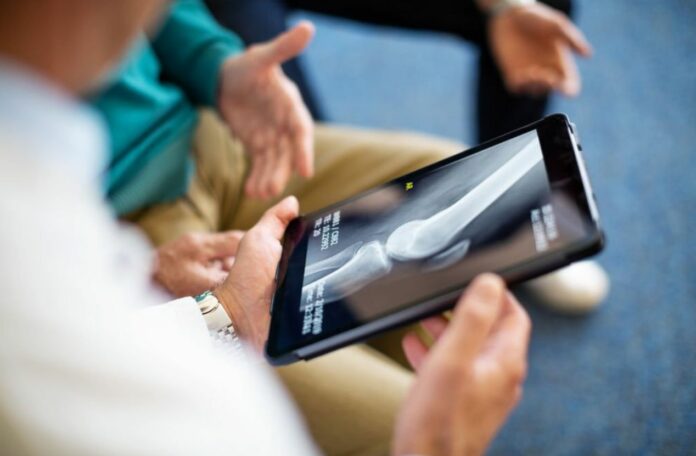Osteoarthritis develops when cartilage in a joint stiffens and starts to deteriorate, damaging the underlying bone and bringing on symptoms like pain, swelling, and stiffness.
The most prevalent type of arthritis, osteoarthritis, affects 32.5 million people in the United States alone, and rates are predicted to increase due to the aging population and trends in obesity.
About half of adults with osteoarthritis are of working age, which affects their capacity to earn a living. The condition can significantly impair a person’s ability to perform routine daily tasks.
There are no known treatments to undo the harm caused by this stiffening of the cartilage.
Exercise, weight reduction, physical therapy, medicines, injections, and joint replacement surgery are all used to alleviate discomfort and improve mobility.
Much is yet unclear about the molecular origins of this damage, as well as how to cure it.
These unanswered questions are particularly relevant to knee osteoarthritis, since cartilage loss is not caused by a single event and aging is the most important risk factor.
Researchers are working harder to comprehend how epigenetics, or how changes in environment and behavior that occur with aging affect how genes function, affects tissues and disease processes across the body.
The researchers used state-of-the-art mass spectrometry equipment to plot the development of structural and protein alterations in mice with knee osteoarthritis throughout the course of their lives and according to sex.
Then, they compared what they found to what we already know about knee osteoarthritis in people.
Researchers found that Klotho played a big role in the molecular process that led to osteoarthritis.
This work was a continuation of earlier research that showed Klotho protects mitochondria in skeletal muscle and is a key part of skeletal muscle healing after injury.
People’s levels of klotho go down as they get older, which is why it’s called a “longevity protein.”
The new study showed that the gene that codes for Klotho was turned off when knee cartilage tissue got stiffer. They implanted models of young and old chondrocyte cells responsible for cartilage creation into settings meant to simulate the stiffness of young and old tissues, and found that the models behaved as predicted.
Due to the lack of Klotho, young chondrocyte cells seemed to be aging when placed on a stiff surface, but when the researchers shielded the cells from the stiffness in their surroundings, they saw chondrocyte health.
“These results provide a compelling new paradigm that will be important for the field in terms of understanding the connection between age-related tissue stiffening and risk for osteoarthritis with aging,” adds Hirotaka Iijima, PhD, PT, assistant professor at Institute for Advanced Research and Graduate School of Medicine in Nagoya University.
Intriguingly, their data also indicated that the frequency of osteoarthritis rose with age in male mice, although female mice did not exhibit the disease’s start and typically retained their cartilage tissue.
This surprising result contrasts with the reaction seen in individuals, where post-menopausal women are considerably more likely than males to get severe knee osteoarthritis.
The authors conclude that these results warrant additional investigation, and a research to investigate the molecular effects of menopause on knee osteoarthritis is now ongoing in Dr. Ambrosio’s lab.
Future investigation will focus on treatment gaps for age-related illnesses.
With the new information, researchers want to find out if there are ways to stop the disease process that leads to osteoarthritis, such as by blocking the pathway that represses Klotho, even in a stiff extracellular matrix environment.
They believe their research may help in the quest to discover a cure for age-related diseases like osteoarthritis.
Dr. Fabrisia Ambrosio adds, “We’re interested in evaluating whether epigenetic regulation of Klotho and other longevity factors by the extracellular matrix may help explain functional decline of tissues throughout the system.”
Source: 10.1038/s41467-022-35359-2
Image Credit: Getty
